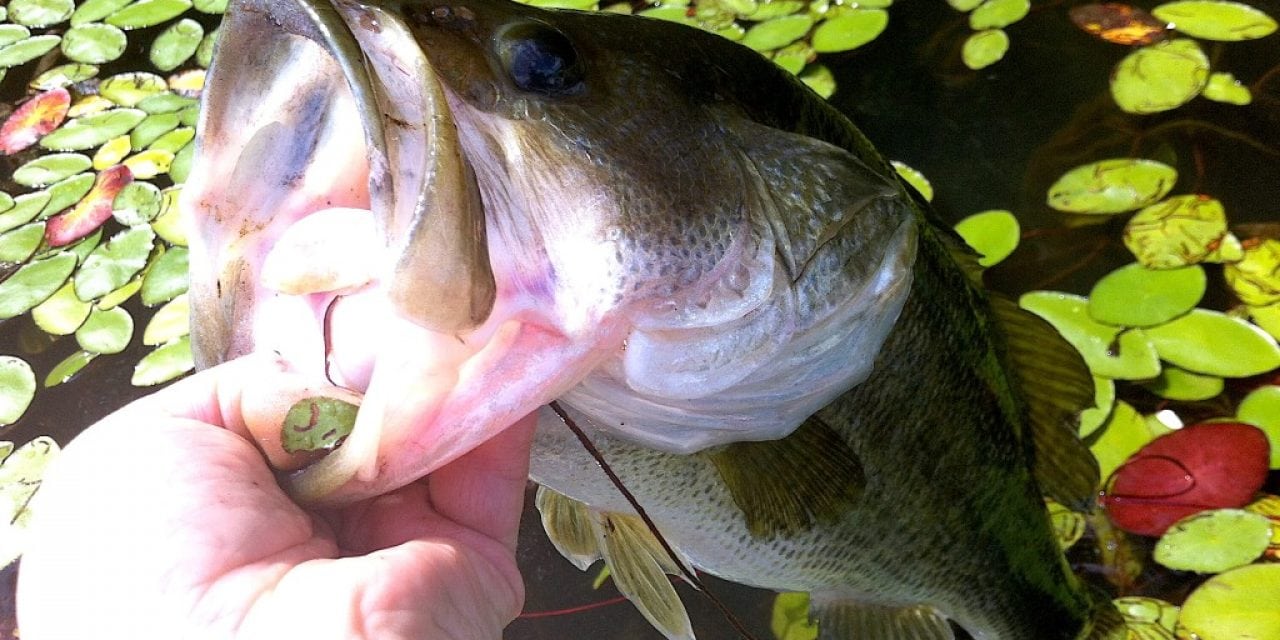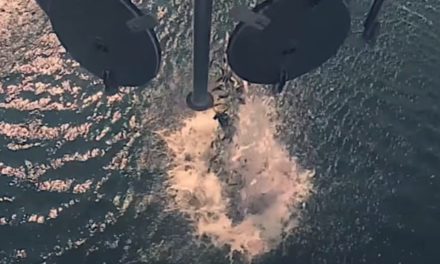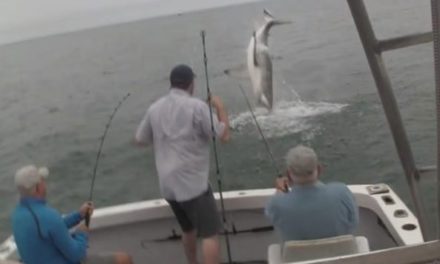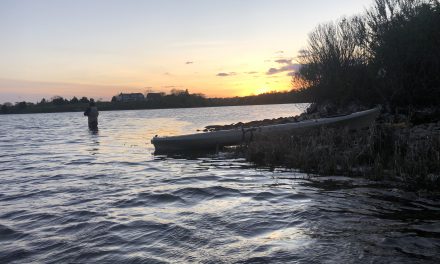Located near one of the biggest metropolitan areas of Tennessee, Percy Priest Lake provides some of the best fishing in the state for a variety of species.
Tennessee has a wide variety of fishing holes, from clear mountain streams to big rivers and small farm ponds to sprawling reservoirs. Anglers in the Volunteer State do not have to travel far to wet a line.
Some of these locations are primarily known for one or two species, while others offer great angling for a variety of sportfish. There are certain locations and times of the year when anglers have the opportunity to visit one location and enjoy lots of action while catching a mixed creel of different species and that definitely spells fun.
Percy Priest Lake is one such location, offering anglers lots of opportunity at a variety of fish. There are times of the year when angling is better for certain species, but for the most part there is always something to pursue in this 14,000-acre lake.
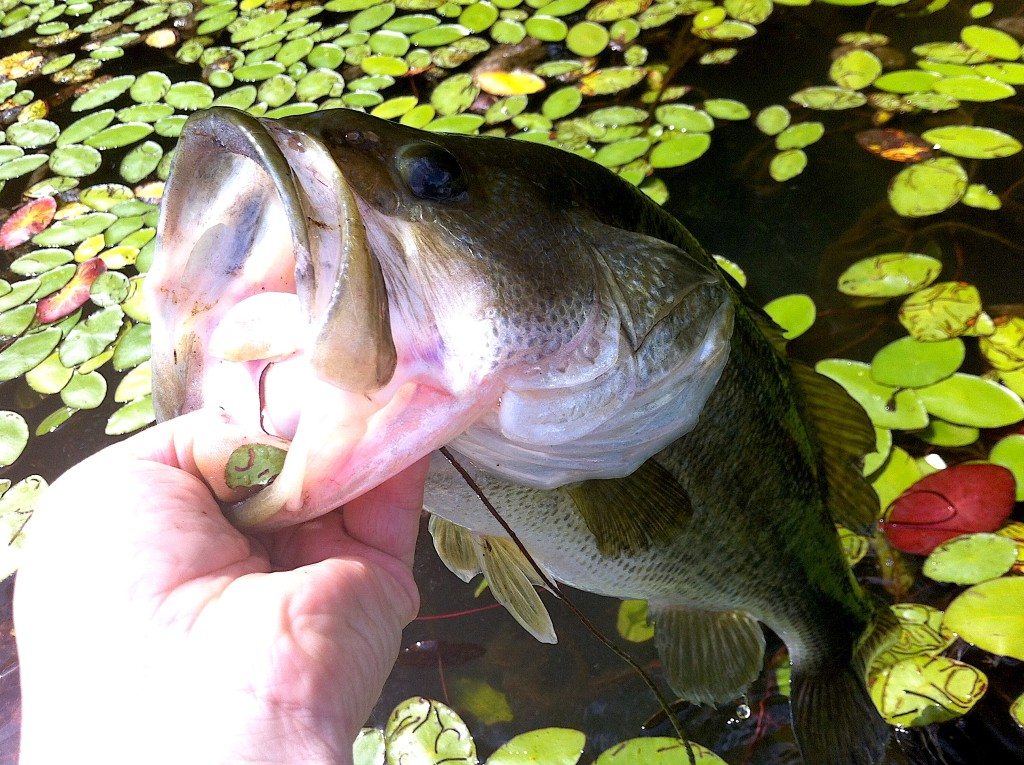
Largemouth bass. (Photo by Scott Bernarde)
LARGEMOUTH BASS
September is when shad start migrating shallow and largemouth and striped bass are not far behind, according to David Bell.
“Shad start packing in the coves off the main river channel, the mouths of creeks like Fall Creek and Spring Creek,” said Bell. “Find the bait and you will find the fish. It’s all about feeding up and getting fat before winter.”
Early morning is a great time for topwater at Priest in the fall. Bell likes to search for feeding fish in pockets right off the main river channel, while guide Jim Duckworth (jimduckworth.com) hits points on the main lake with deep water close, which he describes as usually the points where the river channel bumps against the bank. He also likes places on straight banks where the channel abuts the bank.
Duckworth usually puts in at Fate Sanders Marina because there is less big boat traffic on that end of the lake and lots of good largemouth habitats. But he does caution anglers to be very cautious of shallow water in the upper end. Good electronics are very important for staying in safe water and not ruining a lower unit or hull.
Both anglers like throwing a Zara Spook first thing in the morning. Throw it up to the bank, let it sit until the rings settle out and then work it back to the boat, varying the retrieve and speed until a pattern develops. Bell also likes throwing buzzbaits in the early morning, while Duckworth always keeps a Bandit 200 crankbait in pearl splatter-back tied on a second rod. If the Spook does not stir up some strikes, he tosses the Bandit and fishes it with a fast stop and go retrieve all the way back to the boat.
When the sun comes up good, it usually pushes largemouths down, so it is time to abandon topwater and fish deeper. Duckworth then relies on Bandit 200s while Bell typically stays a little shallower with a Bandit 100 in shad colors. If the crankbait does not do the trick, try a spinnerbait.
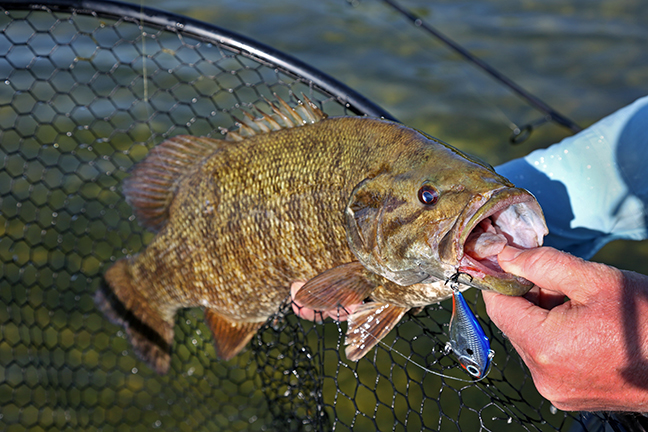
Smallmouth bass. (Photo by Ron Sinfelt)
SMALLMOUTH BASS
Hamilton and Suggs creeks are great places to target smallmouths in fall according to Bell.
“Suggs is one of the biggest creeks on the lake and offers up a lot of big fish at this time of year,” said Bell.
Duckworth fishes Hamilton almost exclusively in the fall for smallmouths and always fishes the end of Bear Island that faces Hamilton Creek.
These Priest experts like throwing Bandit 200 and 300 series crankbaits, while Charlie Campbell, an avid Percy Priest angler, likes throwing the Bandit Flatt Maxx. Natural patterns resembling shad or crawfish are good, as is root beer color. Throw these cranks along points, rock walls, submerged rocks and other underwater cover.
On bluebird days, it is time to consider a shakyhead or a drop-shot rig, with a Daiichi standout hook about 6 inches from the bottom weight. Rig it with a 2-inch hand-poured Big Hammer body. These are deadly on finicky smallmouths when they are holding in rock piles along the bottom. Drop the bait down to a rock pile, let it rest about a minute and then give it some action to entice a strike.
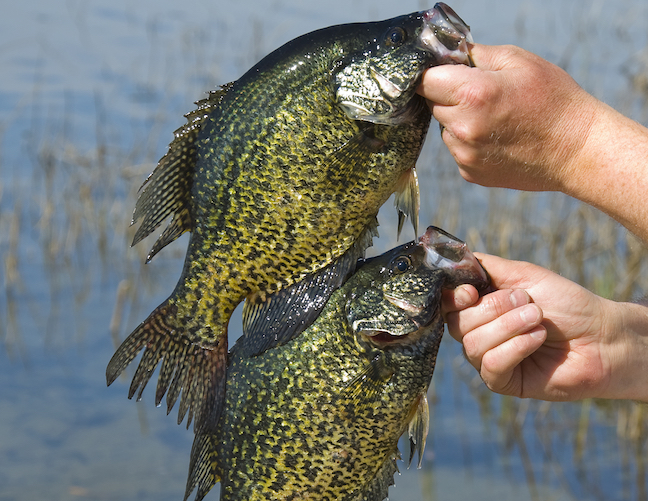
Crappies. (Shutterstock image)
CRAPPIE
Campbell believes fall crappie fishing is often underrated by anglers. While Percy Priest has good crappie fishing all year long, Campbell says fall is one of his favorite times to be on the water. Boat traffic has slowed, and the days are mild and the nights cool.
“You’ll find crappie moving shallow this time of year as water temps begin to drop and schools of shad move to the shallows,” said Campbell. “Crappie are usually found in many of the same places you find them in the spring. Wherever you find cover and baitfish, you’ll find crappie as well.”
Finding crappie during the fall is a little more difficult because the fish are more scattered, so tactics are a bit different. Many people, Campbell included, like to troll during the fall. This lets anglers cover water quicker and speeds up the process of finding fish.
“The key to catching crappie by trolling is largely based on water clarity,” said Campbell. “This method works best when the water is clear. By trolling, I can cover more water and effectively target suspended fish that are chasing roaming schools of shad. Trolling crankbaits works best when crappie are scattered and not holding tight to cover.”
Campbell uses Bandit crankbaits when trolling in the fall because they “run true out of the package, offer controlled depth and are available in many great crappie-attracting colors.” He uses the 200 series Bandit on 10-pound fluorocarbon to troll about 8 to 10 feet deep. He moves to the 300 series for deeper water.
“The depth that crankbaits run varies based upon the type of line, pound test, length of line from rod to lure and boat speed,” said Campbell. “I usually like to pull crankbaits at a speed between 1.5 and 2.0 mph.”
Duckworth trolls at similar speeds, but because his boat typically idles at about 3 mph, he uses a Trolling Paddle that attaches to his Power Pole anchor to slow the boat’s speed. The speed is extremely adjustable simply by lowering or raising the depth of the paddle.
Both anglers troll with multiple rods to cover as much water as possible at varying depths. Trolling catches a lot of fish, but it also brings boats over numerous spots with brush and other cover. Obviously, anglers need to take care when pulling baits over cover so as to not hang up and break off an expensive lure, but it also provides opportunity to locate fish holding in cover. Throw a buoy out to mark the spot and come back later to fish these spots with a jig or minnow.
Casting is another productive fall method for crappies. Campbell opts for a 1/16- or 1/8-ounce Blakemore Road Runner, saying its flash helps catch larger crappies. He rigs the Road Runner with a curlytail grub or a Crappie Ringer in color combinations that feature chartreuse.
“I consider there to be three essentials when rigging a jig for casting,” said Campbell. “First, I use no more than 6-pound line. Second, I use colored line that is easily visible to help detect the lightest strike and third, use a loop knot to tie on the jig to ensure it will hang in a horizontal position.”
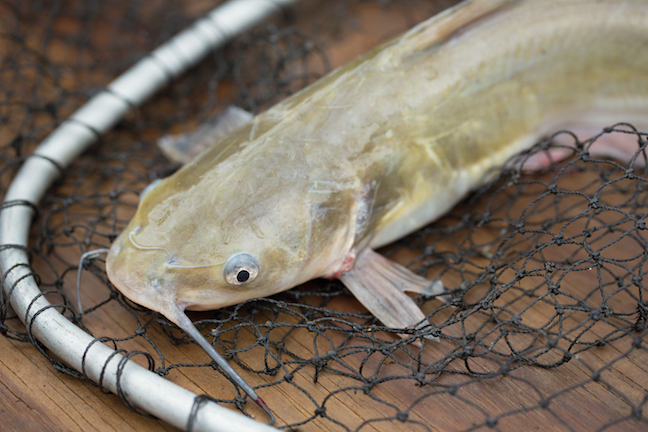
(Shutterstock image)
CATFISH
This month is also great for catching whiskerfish, whether for fun, food or both. Plenty of fish are caught by casting baits, letting them sink to the bottom, taking up the slack and simply waiting for a bite.
Boat anglers should anchor in a good location and fish slip-sinker rigs on the bottom. Give it about 20 to 30 minutes before moving to a different location. Another method is to drop baits and use a trolling motor to slowly drift until feeding fish are found.
For anglers looking to maximize time on the water, while getting plenty of fish for the freezer, Duckworth recommends using jugs. He typically puts out jugs divided between two coves or pockets that are close together. He checks out the pockets first to make sure there are schools of shad present and discover which way the wind is blowing. Duckworth likes to fish coves where the wind is blowing out and mostly at night when the wind is not too strong.
Duckworth makes his “jugs” from pool noodles and puts reflective tape on top so he can easily spot them with a handheld light. From the noodle, the guide attaches 4 feet of line and a 1/0 to 4/0 Daiichi hook, depending upon the size catfish being targeted.
“I use Canadian nightcrawlers treated in Worm-Glo,” said Duckworth. “It turns the worms bright green and they get much fatter and friskier.”
Simply go to the back of one of the pockets, bait up half the jugs and put them out. Then motor over to the second pocket and put the other half of the jugs out. By the time the second set of jugs are out, it is time to idle over to the first set and shine a light to locate the jugs.
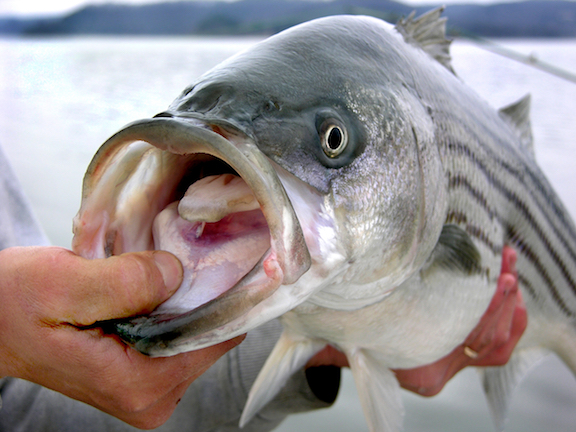
Striped bass. (Shutterstock photo)
STRIPED BASS
Anglers looking for a big fish experience may want to match wits with some of the jumbo striped bass swimming in Priest, as they are plentiful and actively feeding. Just like black bass and crappie, stripers are following shad and feeding voraciously. Use electronics to find schools of shad, spot them visually or watch for feeding gulls diving to the surface of the water.
Bell likes to cast for stripers with a 1/4-ounce Road Runner with white grub or a 4-inch Big Hammer swimbait. He throws these baits on 12-pound mono. Once the sun comes up, the 4-inch Big Hammer swimbait is hard to beat for hungry stripers.
Fall is here and although the temps are cooling off, the fishing is heating up. Get out there, fling a few baits and enjoy some of the most fun fishing of the year.
The post The Lowdown On Percy Priest Fishing appeared first on Game & Fish.

